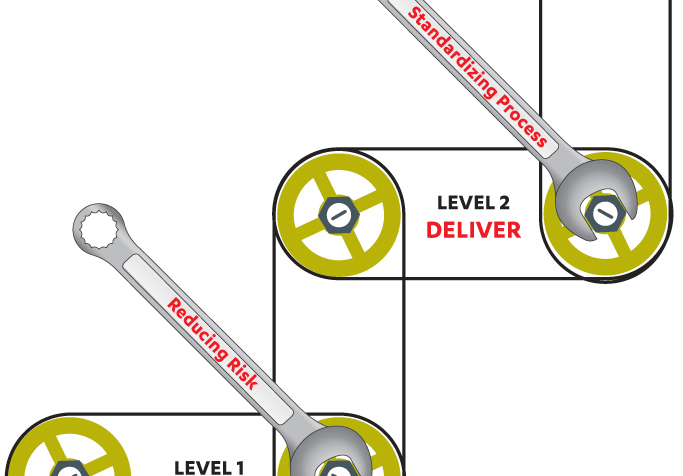During a recent call with a prospective client, he informed me that his organization has had 15 Severity 1 problems sitting in a queue for over 90 days. From what I know about this IT organization, and because it tracks its incidents, problems and duration, I would peg it at just over a level 1 IT maturity, where some foundational services are installed but not fully implemented.
Classically, an organization operating at, or just above, a level 1 is focused on “keeping the lights on” activities, as well as “putting out fires.” What’s broken rarely gets fixed because no one has the capacity to diagnose the problem (i.e. root cause) and then implement a change. Likewise, the demand for “getting it done” outweighs the need to do it right.
Here are some other indicators of an organization operating between a level 1 and 1.5 maturity level.
- Nothing is tracked well. One former client’s company paid millions of dollars in penalties due to an over-allocation of software licenses because no one in IT was keeping track of the number users during a period of high employee headcount growth.
- Documentation is sketchy. Another client’s organization had loads of initial process/software/configuration documentation but didn’t have the discipline, change control, and quality practices to maintain the knowledge as the environment evolved.
- IT manages noise. My favorite anecdote is about a senior director who held a one-hour operational review meeting EVERY morning with all her senior staff just to understand what happened over the last 23 hours in case her peers or boss called.
Organizations between a level 1 and 1.5 usually have a myriad of problems across multiple dimensions. Assessing these issues can seem overwhelming. In fact, it’s often the hardest thing for an IT organization at this level. But it’s at this point that the pain of managing “noise” is greater than the risk of moving towards the “P” word: PROCESS. Before doing this, however, it’s important to understand the current state: what abilities you have, how committed your management and business partners are to change, and how accountable your IT leaders are for their part in it all.
One way to approach the problem is to use a tool, like a balanced scorecard, to help you think in a simpler, more disciplined, and measurable fashion.
Each of the four standard components of a balanced scorecard have a cause and effect on the other components:
- Learning and Growth: How much does IT need to invest in its people so they have the skills necessary to perform high quality activities and interactions? And fulfill the outcomes of the services they support?
- Internal Business Processes: Are IT processes consistent, repeatable, and measureable? Are they delivering/achieving expected outcomes for customers?
- Customers: What are external customers paying the business for? Where is the business headed? How can IT enable better decision-making? How aligned are IT’s strategic imperatives with the business’ strategic driver?
- Financial: How can the company generate revenue from the services IT delivers?
So what’s the key to progressing towards a 2+ organization? It’s simplification, measurement, and consistent communications. I know it’s not sexy, but they’re probably not paying you for sexy. It’s not easy either, but the benefits, like freed up capacity and helping your business run more efficiently and effectively, are worth it.
How have you simplified?


